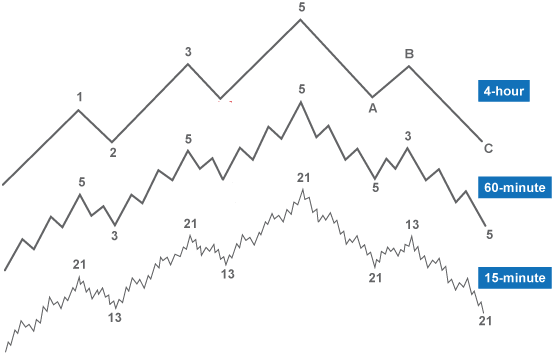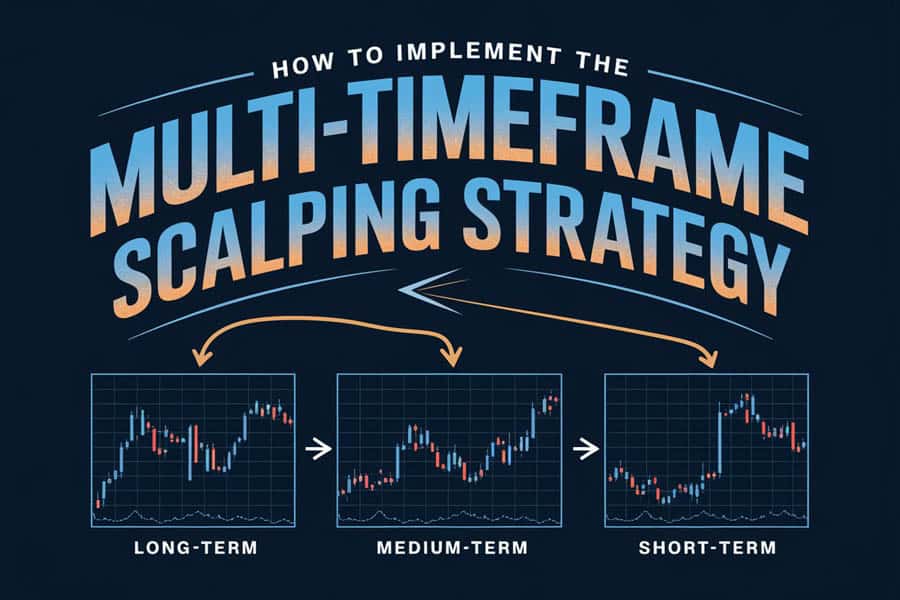Multi-time frame (MTF) trading is a technique used by many traders to improve accuracy and context when analysing price movements. Rather than relying on a single chart, MTF trading involves evaluating an asset across different time frames to build a clearer picture of trends, momentum and entry opportunities.
By combining higher and lower time frames, traders aim to filter out noise and confirm signals before executing trades.
In this article, we explore five key rules to help traders master MTF trading, whether using it for forex, commodities, equities or contracts for difference. Following these MTF trading rules can lead to more consistent decisions and better control over risk and reward.
5 Key Rules to Master MTF Trading

1) Start with the Higher Time Frame for Direction
The first and perhaps most important rule in MTF trading is to begin your analysis with the higher time frame. This could be the daily, weekly or four-hour chart, depending on your overall strategy. The goal is to determine the dominant trend and overall market sentiment before zooming in on smaller intervals.
Traders often make the mistake of starting with short time frames, leading to trades that go against broader trends. One of the most effective applications of MTF trading is using the higher time frame to guide the direction of your trades. If the daily chart shows an uptrend, intraday traders might only look for buy signals on shorter time frames like the one-hour or fifteen-minute chart.
2) Use Lower Time Frames for Precision Entries
Once the higher time frame provides context, the lower time frame helps refine your entry and exit points. This is where MTF trading becomes powerful. A trader might see a support level on the four-hour chart and wait for a bullish candlestick formation on the fifteen-minute chart to enter the trade with tighter stop-loss placement.
The rule here is to use the lower time frame not to second-guess your broader view, but to time your trades with more precision. This combination allows for more favourable risk-reward ratios and better tactical decision-making in fast-moving markets.
3) Align Time Frames with Your Strategy

MTF trading is highly customisable, but only if you choose time frames that suit your trading style. For instance, a swing trader might use the daily chart for trend analysis, the four-hour for structure, and the one-hour for entry signals. A scalper might prefer the one-hour, fifteen-minute and one-minute combination.
The key rule is consistency. Stick with your selected time frame structure and avoid switching randomly between intervals. When time frames are aligned with your strategy, MTF trading becomes more systematic and less confusing, allowing you to trust your process with greater confidence.
4) Look for Confluence Across Time Frames
Confluence is when two or more signals or technical elements point to the same conclusion. In MTF trading, this could mean a moving average crossover on the higher time frame aligning with a breakout on the lower time frame. It could also involve multiple levels of support and resistance appearing across different charts.
This rule emphasises the importance of not acting on isolated signals. Instead, MTF trading encourages waiting until the evidence aligns across charts. When trend direction, momentum indicators and price action match up across time frames, it increases the probability of success and gives traders more conviction in their trades.
5) Avoid Overcomplication
While MTF trading can add depth to your analysis, it can also introduce unnecessary complexity if not managed carefully. One of the most important rules is to keep it simple. Using too many time frames or overloading charts with indicators can lead to confusion and hesitation. The goal of MTF trading is clarity, not complication.
Choose a manageable number of time frames, typically two or three, and focus on how they work together. Simplicity is key to recognising patterns and making fast decisions without paralysis. Overcomplication is one of the main reasons traders abandon MTF trading, even though it can be highly effective when used properly.
Conclusion
MTF trading offers traders a deeper understanding of market behaviour by combining multiple perspectives into a single decision-making framework. Starting with the higher time frame for direction, using the lower for timing, aligning your time frames with your strategy, seeking confluence, and keeping things simple are the five key rules that can help you master this technique.
With discipline and consistent application, MTF trading can enhance both technical accuracy and confidence. It is not about adding more indicators or making trading more complex, but about making smarter, clearer decisions that align with the bigger picture.
Disclaimer: This material is for general information purposes only and is not intended as (and should not be considered to be) financial, investment or other advice on which reliance should be placed. No opinion given in the material constitutes a recommendation by EBC or the author that any particular investment, security, transaction or investment strategy is suitable for any specific person.























